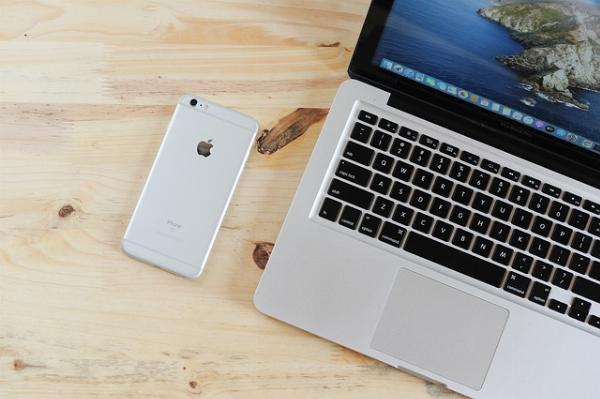Implementing Selenium Grid for Parallel Testing

Strong 8k brings an ultra-HD IPTV experience to your living room and your pocket.
Executing tests on a single machine proved to be time-consuming. Given the availability of multiple computers, conducting tests one at a time seemed inefficient. The optimal solution involves testing on a network of interconnected machines, each running different browser environments and executing multiple test cases in parallel. This is precisely where Selenium Grid comes into play.
It facilitates testing across all major browsers, operating systems, and mobile device browsers. With Selenium Grid, you can achieve extensive browser coverage in your functional tests, ensuring an optimal user experience for a broad spectrum of potential users. Moreover, executing tests on a single machine proved to be time-consuming. Given the availability of multiple computers, conducting tests one at a time seemed inefficient.
What is Selenium Grid?
Selenium Grid serves as an intelligent proxy server designed to facilitate parallel test execution across multiple machines. It achieves this by directing commands to remote web browser instances, with a single server acting as the hub. This hub efficiently routes test commands, formatted in JSON, to numerous registered Grid nodes.
The hub plays a pivotal role in orchestrating concurrent test execution across multiple machines, effectively managing various browsers centrally, rather than conducting separate tests for each. By leveraging Selenium Grid, cross-browser testing becomes streamlined, allowing for the execution of a single test across multiple machines and browsers simultaneously, thereby simplifying result analysis and comparison.
The Selenium Grid architecture comprises two key components:
1. Hub: This server receives access requests from the WebDriver client and routes JSON test commands to remote drivers on nodes. It executes instructions received from the client by distributing them across multiple nodes in parallel.
2. Node: Operating as a remote device, the node consists of a native operating system and a remote WebDriver. It receives JSON test commands from the hub and executes them using WebDriver, thereby contributing to the parallel test execution process.
How does Selenium Grid operate?
To utilize Selenium Grid, you must establish both the hub and the nodes within your network. Any machine with Java installed that can communicate with the nodes can function as the hub. Starting the hub and specifying its port and options can be done via the command line or a configuration file.
Nodes, on the other hand, are machines equipped with the browsers you wish to test. You can incorporate any number of nodes, provided they have Java and Selenium Server installed and can establish a connection with the hub. Registering the nodes to the hub and specifying their capabilities, such as browser name, version, platform, and other parameters, can be accomplished via the command line or a configuration file.
Once the hub and nodes are configured, you can develop your tests using any programming language alongside Selenium WebDriver. Utilizing the desired capabilities object, you can define the browser and platform for testing. Then, employing the remote WebDriver, you can transmit the test commands to the hub. Subsequently, the hub will identify an available node with the requisite capabilities and execute the test accordingly.
What is Parallel Testing, also known as Parallel Test Execution?
Parallel testing involves simultaneously testing different modules or applications across multiple browsers, rather than conducting tests sequentially, one after the other.
Diverging from sequential testing, where modules or functionalities are tested in succession, parallel test execution allows for concurrent testing across various browsers. This sequential approach to testing across multiple browsers is notably time-intensive.
By employing parallel testing, execution time and efforts are significantly reduced, leading to expedited delivery timelines. This method is particularly advantageous for tasks such as cross-browser testing, compatibility testing, localization, and internalization testing. For instance, when dealing with two available software versions, parallel testing enables concurrent assessment of both versions, allowing for efficient comparison and evaluation.
What are the advantages of utilizing Selenium Grid?
Employing Selenium Grid for parallel testing offers numerous benefits. Firstly, it can economize on time and resources by executing multiple tests concurrently across diverse machines. This acceleration can streamline the testing procedure and abbreviate the feedback cycle. Secondly, scrutinizing your website across different browsers and platforms can enhance your test coverage and precision. This can facilitate the identification and resolution of compatibility glitches, guaranteeing a seamless user experience.
Let's explore some of the advantages associated with utilizing Selenium Grid:
1. Framework Compatibility:
Selenium Grid seamlessly integrates with various frameworks such as PyTest, Robot, MsUnit, Cucumber, Capybara, PyUnit, and NUnit. This compatibility ensures effortless verification of web page compatibility across diverse user environments. While familiarity with Selenium tools and proficient usage remain crucial, the availability of dedicated frameworks simplifies the overall process.
2. Cross-Browser Testing Versatility:
Comprehensive web application testing requires the ability to support various browsers. Selenium Grid excels in this aspect by facilitating testing across a wide range of popular web browsers. This ensures thorough cross-browser testing, catering to the diverse browser preferences of end-users.
3. Multi-Platform Compatibility:
Testing web applications across different operating systems can pose challenges. Selenium Grid addresses this by offering built-in support for various operating platforms, minimizing the need for script adjustments when transitioning between operating systems. This capability streamlines the testing process across multiple platforms, resulting in time and effort savings.
4. Open-Source Nature:
Selenium's open-source nature, coupled with its vibrant creator and user communities, contributes to its continuous improvement. Regular updates and extensive community testing ensure reliability. The availability of Selenium as free software encourages widespread adoption among software developers, fostering opportunities for diverse users.
5. Parallel Testing Efficiency:
Selenium Grid offers a valuable feature of concurrent test execution, significantly reducing testing time. Unlike sequential testing methods, simultaneous execution enhances efficiency and ensures higher-quality test outcomes.
6. Enhanced Reporting Capabilities:
Effective monitoring of the testing process is crucial for both manual and automated testing. Selenium seamlessly integrates with external tools, enabling precise and insightful reporting. This integration enhances visibility into testing progress, facilitating a more effective approach to tracking and analyzing results.
Implementing Selenium Grid for Parallel Automated Testing
Engaging in parallel testing, particularly when striving for compatibility across various platforms and browsers, entails additional expenses. The costs associated with compatibility testing surge as it becomes increasingly challenging to access all browsers and their respective versions efficiently. At times, achieving comprehensive access may become unfeasible.
LambdaTest, an AI-powered test orchestration and execution platform specializing in Selenium automation testing, offers a practical solution. With a comprehensive grasp of Selenium Grid utilization, testers can ensure the browser compatibility of their web applications through parallel testing on LambdaTest’s Cloud Selenium Grid.
This grid provides immediate access to over 3000 real browsers and devices, spanning diverse versions, manufacturers, and operating systems, encompassing real desktops, iOS, and Android devices. Conducting tests under real user conditions heightens result accuracy, facilitating the identification and resolution of bottlenecks.
How to effectively leverage Selenium Grid for parallel testing?
Effectively leveraging Selenium Grid for parallel testing involves adhering to several best practices. Firstly, thorough planning and design of tests are essential. This entails identifying the browsers, platforms, test scenarios, cases, and data parameters to be covered. It's crucial to avoid dependencies or conflicts between tests to ensure seamless execution.
Secondly, configuring and optimizing the hub and nodes is paramount. This includes selecting the appropriate machines, ports, options, and capabilities for both the hub and nodes. Achieving a balance in the load and performance of tests across the nodes is vital for efficient parallel testing.
Lastly, employing the right tools and frameworks is crucial for successful Selenium Grid utilization. It's imperative to utilize programming languages and web drivers compatible with Selenium Grid. Additionally, employing a test runner and reporting tool capable of supporting parallel testing and generating comprehensive reports enhances effectiveness. These measures collectively contribute to maximizing the benefits of Selenium Grid for parallel testing.
Disadvantages of Parallel Testing
Incorporating independent modules is crucial when embracing parallelization to allow for concurrent execution of various modules. Modules with interdependencies cannot be accommodated within the parallel approach.
A comprehensive comprehension of the product and its workflow is necessary for parallelization. Although parallelization can improve cross-browser compatibility testing, its capacity to encompass multiple browsers is restricted unless supplemented by distributed testing. Distributed testing entails configuring multiple machines and browsers to broaden the coverage.
Conclusion
Selenium Grid provides the advantage of conducting tests concurrently across various browsers, versions, and devices. LambdaTest's real device cloud expands test coverage by offering access to both older and newer devices and browsers. This strategy aids in delivering a uniform end-user experience, aligning with the principles of continuous delivery and leveraging Selenium Grid.
Note: IndiBlogHub features both user-submitted and editorial content. We do not verify third-party contributions. Read our Disclaimer and Privacy Policyfor details.







